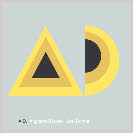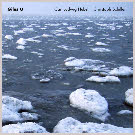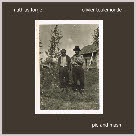Home » Jazz Articles » Multiple Reviews » Another Timbre’s Duos with Brass
Another Timbre’s Duos with Brass
Surprisingly, compared to the label's late noughties output, electronics and manipulation are in short supply here (maybe because a series of "electroacoustic splits" is planned for 2011.) In his sleevenotes for Giles U, Carl Ludwig Hübsch refers to "mechanically generated electronic music." It is a phrase that the content of these CDs repeatedly calls to mind; when sounds like white noise or feedback issue forth, listeners may be rechecking the credits to see if electronics are in use, but close listening reveals that these sounds come from acoustic sources and are mechanically generated.
Yes, therein lies the success of this series: the discs all require close listening to reveal their true quality. Consequently they draw the listener deeper and deeper into their sound worlds, with repeated listenings being needed, each one revealing more than before. Fascinating stuff.
 Roberto Fabbriciani & Robin Hayward
Roberto Fabbriciani & Robin Hayward
Nella basilica
Another Timbre
2010
Flautist Roberto Fabbriciani is renowned for his performances of works by modern composers, most notably Luigi Nono. Before this session he had not recorded improvisations, although he and tuba player Robin Hayward had together performed some of Nono's late works. Both musicians have developed their instruments, Hayward using a new microtonal valve system, and Fabbriciani his self-designed hyperbass flute—over twelve metres of tubing! The latter produces fearsome sounds at the lower threshold of human hearing, meaning they are felt in the internal organs as much as heard.
Overall, the combination of tuba and the lower frequency flutes creates a bottom-heavy soundscape in which boundaries between tuba and flutes are blurred. This is embellished by the players' percussive sounds—pad noise from the flutes and impact on the body of the tuba—and the characteristic whistling wind-tunnel sound of breath passing through the instruments' tubing. Otherwise, it is the lingering, slowly-evolving tones of the instruments that dominate. There are no rapidly-articulated passages here; everything moves at a stately pace, allowing plenty of time to wallow in the varied textures of the sounds. That hyperbass flute, in particular, is not played hurriedly; maybe it is physically impossible to do so. As a result, it sustains notes long enough to border on a drone effect, with the tuba overlaid. Awesome.
 Angharad Davies & Axel Dörner
Angharad Davies & Axel Dörner
A.D.
Another Timbre
2010
Before hearing any of this series, based on their past performances as instrumentalists and improvisers, on paper the pairing of violinist Angharad Davies and trumpeter Axel Dorner looked as tempting as any. Each of them combines technique with the instincts and experience essential for improvising. The reality proves to be just as good as anticipated. They play it straight, with the separate sounds of the instruments being clearly distinguishable throughout and complementing each other to good effect.
Although distinguishable, each instrument produces some atypical sounds. In a stunning performance, Dörner coaxes an extraordinary range of sounds out of his trumpet, from breathy resonances verging on white noise through to low frequency sounds of tongue fluttering and metallic percussive noises. Davies matches him in kind (again, some of her high notes could be electronic) but, more importantly, she always manages a response that is timely and appropriate. The end result is two instruments meshing into a seamless whole; the parts can be heard but they are so sympathetically matched that the whole is greater than their sum. Cleverly, the track titles reflect this symbiosis, being written half in German, half in Welsh. Very fitting.
The best of the bunch? Close, but it is really too close to call.
 Carl Ludwig Hübsch & Christoph Schiller
Carl Ludwig Hübsch & Christoph Schiller
Giles U.
Another Timbre
2010
On the surface, the pairing of tuba with spinet seems an eccentric one, both for historical and sonic reasons. The spinet—a smaller version of the harpsichord—was losing popularity by the time the tuba was on the rise. Each has largely been used in an accompanying role, and there are few contexts in which the two have played together. The tuba's bass sounds are in complete contrast to the higher pitches of the spinet, bringing to mind cartoon images of an elephant and a mouse.
But none of that concerned tuba player Carl Ludwig Hubsch and spinet player Christoph Schiller when they first played together in 2008-09; they felt a strong connection in their playing—the kind of thing that transcends details of instrumentation; it remains obvious here.
In fact, both Hübsch and Schiller have modified their chosen instruments, in the process getting rid of the seeming disparity. Schiller's spinet has become a semi-percussive instrument, amply illustrated by this CD's opening sounds which are most reminiscent of the clacking of an old-fashioned typewriter. Elsewhere, it sounds more like prepared piano—or even a detuned guitar when Schiller strikes or plucks the strings inside. In similar fashion, the tuba produces notes far higher than its stereotypical oom-pah, the result of Hübsch's breath control and circular breathing. Put that all together and it is certain less than one person in a hundred could correctly identify the instrumentation here.
Be that as it may, the dominant factor is that strong connection that Hübsch and Schiller recognised in each other. It means they produce subtle music that is both sympathetic and beautiful, ultimately making the vagaries of their instruments irrelevant.
 Mathias Forge & Olivier Toulemonde
Mathias Forge & Olivier Toulemonde
Pie 'n' Mash
Another Timbre
2010
In concert, the duo of Mathias Forge and Olivier Toulemonde are great fun, putting on an impressive show. This is largely because Toulemonde, who previously played flute, saxophone and electronics, now manipulates an extraordinary array of purely acoustic objects including a resonant trestle table, whisks, bowls, plates, marbles, Styrofoam and a bow—like some hybrid between a conjuror and a deranged chef. (Maybe that explains the album title, the name of an English "delicacy.") This recording faithfully reflects the diversity of sounds that he generates with his objects including assorted scrapings and resonances. (Harking back to past releases on Another Timbre, Toulemonde is truly in the footsteps of the great Hugh Davies.)
In amongst all this, though, let us not lose sight of the brass component, Forge's trombone. As the video footage below shows, Forge finds plenty of space for his trombone in amongst Toulemende's performance. His breathy playing, with occasional use of mutes, does not try to compete with Toulemonde, instead adopting a complementary role. In fact, some of his sounds are highly relevant to the culinary theme, sounding like sizzling food or steaming pans boiling over. The end result is a sound sculpture or piece of performance art which stands up well on its own as a recording, without any accompanying visuals.
Tracks and Personnel
Nella basilica
Tracks: Nella basilica; Adagio; Riflessione; Colori di Cimabue; Arezzo.
Personnel: Roberto Fabbriciani: bass, contrabass and hyperbass flutes; Robin Hayward: microtonal tuba.
A.D.
Tracks: Stück un; Stück dau; Stück tri.
Personnel: Angharad Davies: violin; Axel Dörner: trumpet.
Giles U.
Tracks: Seven untitled tracks: 7' 27"; 9' 41"; 5' 37"; 10' 53"; 8' 08"; 6' 02"; 5' 18."
Personnel: Carl Ludwig Hübsch: tuba; Christoph Schiller: spinet.
Pie 'n' Mash
Tracks: One track 38' 50."
Personnel: Mathias Forge: trombone; Olivier Toulemonde: acoustic objects.
Comments
Tags
For the Love of Jazz
 All About Jazz has been a pillar of jazz since 1995, championing it as an art form and, more importantly, supporting the musicians who create it. Our enduring commitment has made "AAJ" one of the most culturally important websites of its kind, read by hundreds of thousands of fans, musicians and industry figures every month.
All About Jazz has been a pillar of jazz since 1995, championing it as an art form and, more importantly, supporting the musicians who create it. Our enduring commitment has made "AAJ" one of the most culturally important websites of its kind, read by hundreds of thousands of fans, musicians and industry figures every month.


















